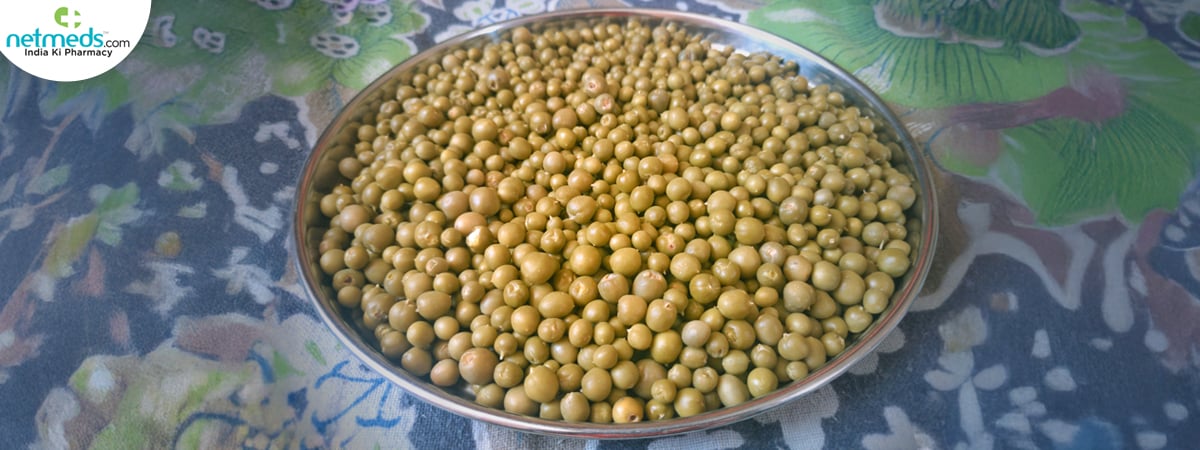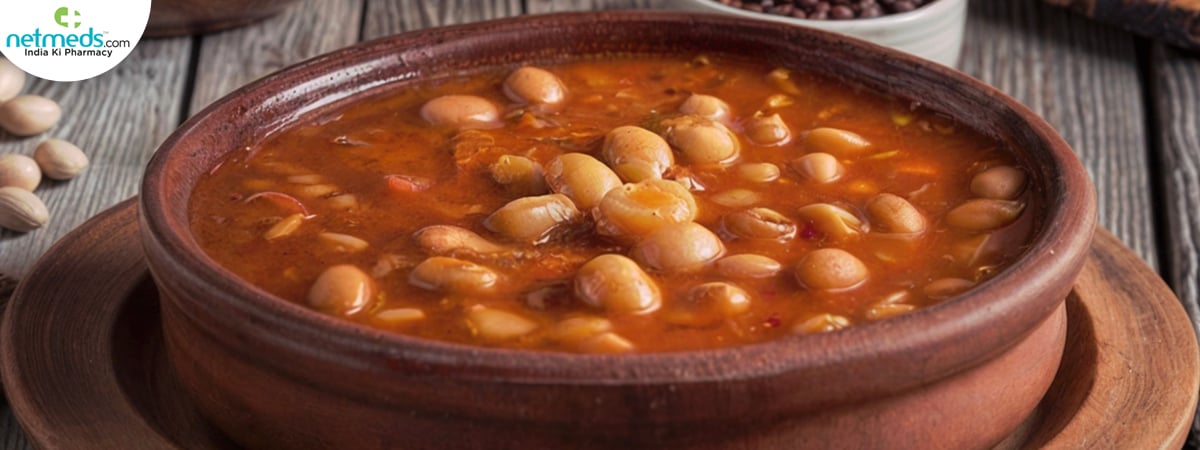Sangri, also known as Prosopis cineraria, is a humble yet highly nutritious bean native to the arid regions of Rajasthan, India. Often called the Desert Bean, Sangri is a vital part of Rajasthani cuisine and culture. It grows naturally on the hardy ‘Khejri' tree, which thrives even in harsh, water-scarce conditions of the Thar Desert. This resilient bean has sustained desert communities for centuries, offering both nutrition and flavour in abundance. Packed with proteins, minerals, and fibre, it is a true superfood from the desert. The article delves into health benefits, uses, and a simple traditional recipe from this amazing bean.

Also Read: Fig/Anjeer: Nutrition, Ayurvedic, Therapeutic Benefits And Uses For Skin And Hair Health
The Sangri Plant
The Sangri bean is a slender, elongated pod about eight to ten long, green when young and turning brown as it matures. It features tiny leaves and yellowish flowers. Inside each pod are small, edible seeds with a distinct earthy flavour. It also grows naturally in other dry, desert-like areas of Asia, Africa, Afghanistan, Iran, and Pakistan. Not strongly aromatic like spices or herbs, the plant has a mild, earthy, nutty aroma when cooked. Its scent is more rustic than fragrant and blends beautifully with Indian spices such as cumin, coriander, and mustard oil in traditional Rajasthani dishes.
Nutritional Benefits Of Sangri
Sangri is a powerhouse of nutrients. Despite its dry habitat, this desert bean is rich in proteins, fibre, essential minerals, and antioxidants. Here are some of them:
A Good Protein Source
Sangri provides a natural plant-based protein source, making it an excellent choice for vegetarians and vegans. Regular consumption helps in muscle repair and in maintaining energy levels.
Rich In Fibre
The high fibre content aids digestion, supports gut health, and helps prevent constipation. It also contributes to better weight management.
Packed With Minerals
Sangri contains calcium, potassium, magnesium, and iron. All these minerals are essential for bone health, heart function, and overall vitality.
Antioxidant Source
Antioxidants in this nutritious bean combat free radicals, reducing oxidative stress and helping the body resist many mild to severe diseases.
Also Read: Iron And Vitamin C: Why We Need Both And How To Add Them To Diet
Wellness Benefits Of Sangri
Sangri bean offers many health and skin healing benefits. Here are the top ones:
· The low glycaemic index of Sangri makes it beneficial for diabetics. It helps control blood sugar levels and lowers bad cholesterol.
· In traditional Rajasthani diets, Sangri is prized for helping maintain hydration and mineral balance in hot, dry weather. It also helps to keep the body resilient even in arid conditions.
· Rich in antioxidants, Sangri protects skin from free radical damage, reducing signs of ageing like wrinkles and fine lines.
· The bean can support clearer skin by cleansing the blood and promoting a natural glow.
·San gri has many essential fatty acids that improve elasticity and maintain moisture balance. It also helps to nourish skin cells
· By strengthening skin protection, Sangri enhances the skin’s defense against sun damage and environmental stress.
How To Use Sangri In Cooking
A super versatile ingredient, Sangri can be used in multiple ways. Before cooking, dried Sangri beans need to be soaked overnight and then boiled until tender. Once prepared, they can be added to:
Curries and Stir-Fries: Combine boiled Sangri with spices, onions, and tomatoes for flavourful side dishes.
Pickles: Dried Sangri is often mixed with mustard oil and Indian spices to make a tangy, long-lasting pickle.
Mixed Vegetables: Sangri pairs beautifully with capers or ‘ker’, giving rise to the famous Ker Sangri dish from Rajasthan.
Salads and Snacks: Toss boiled Sangri with herbs, lemon, and salt for a nutritious salad.
Seasoning: Its earthy flavour and chewy texture complement spicy and tangy Rajasthani seasonings perfectly.
In conclusion, Sangri is more than just a local food and indeed a symbol of survival, sustainability, and flavour. Whether you try it as a tangy pickle or in a traditional Ker Sangri Sabzi, Sangri deserves a spot in every health-conscious kitchen. If you come across this superfood, try this authentic recipe from the desert land of India.

Traditional Rajasthani Ker Sangri Sabzi
Ingredients:
· 1 cup dried Sangri
· ½ cup dried Ker berry (optional)
· 2 tbsp mustard oil
· 1 tsp cumin seeds
· 1 pinch asafoetida
· 1 tsp red chili powder
· ½ tsp turmeric powder
· 1 tsp coriander powder
· 1 tsp dry mango powder
· Salt and pepper to taste
Method
· Soak Sangri (and Ker if using) overnight. Boil them in salted water until soft, then drain
· Heat mustard oil in a pan until it releases smoke. Reduce the heat and add cumin seeds and asafoetida
· Add turmeric, red chili, and coriander powder. Stir for a few seconds
· Add the boiled Sangri and Ker, mix well, and cook until well blended.
· Sprinkle dry mango powder and salt. Mix again and cook for 2 minutes.
· Enjoy hot with bajra roti or paratha for an authentic Rajasthani meal.
(This content is reviewed by Kalyani Krishna, Chief Content Editor)
Author Profile: Preeti Sharma
Preeti Sharma has a Master's in Electronic Media and Mass Communication and certification in short-term writing from Florida. With close to a decade of experience, she specializes in crafting engaging blogs on beauty, veterinary care, and healthy cooking. Preeti is proficient in video editing tools and produces captivating and informative content across multiple platforms.
References:
Review of Sangri (Prosopis Cineraria Pods) - A Rich Protein Source
https://www.wisdomlib.org/journals/12029-review-sangri-prosopis-cineraria-pods-rich-proteinhttps://www.researchgate.net/publication/372177726_Review_of_Sangri_Prosopis_Cineraria_Pods_ _A_Rich_Protein_Source_of_Rajasthani_Cuisine



 Previous
Previous